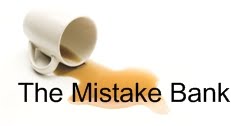Q. Let’s talk about hiring. What questions do you ask?
A. I’ll say, “Have you ever started anything? From the time you were little, did you invent anything? An organization? Did you start a club?” Then I’ll ask, “What was the hardest part of that? What about failure? Talk to me about failure.” I think that is really important, because if you’re pushing, you’re going to fail. If you’re pushing in whatever you’re doing, you’re going to fail way more than you succeed. It’s that old saying: “You can fail without ever succeeding, but you can’t succeed without ever failing.”
The culture we live in teaches us to fear failure, and I think that’s a huge mistake. When I look back over the history of our organization, the times we’ve been most creative were a result of the pressure of a failure or near failure.
So I’ll have people talk about that, and see if, in their narrative, they blame other people. Or do they have some degree of humility in what they maybe should have anticipated and didn’t? And what they would do differently? We try to detoxify that at First Book. Occasionally, we give out a Brick Wall Award for an idea that should have gone really well, but ended up crashing into a brick wall. It’s a way of saying, “It’s O.K., you did the thinking, and you gave it your best shot, and it crashed, but it was an honorable step.”
Q. What else?
A. I think that somebody with a sense of humor is really important, both directed at themselves and others.
I have learned that a sense of humor is essential for learning from mistakes. If you take yourself too seriously, you won't learn. Take it from someone who knows.
The Corner Office series, by Adam Bryant, is a great repository of mistake stories and thinking about learning from errors and failure. You can find links to more of these columns here. Bryant has also adapted this material into a book, called The Corner Office: Indispensable and Unexpected Lessons from CEOs on How to Lead and Succeed.



